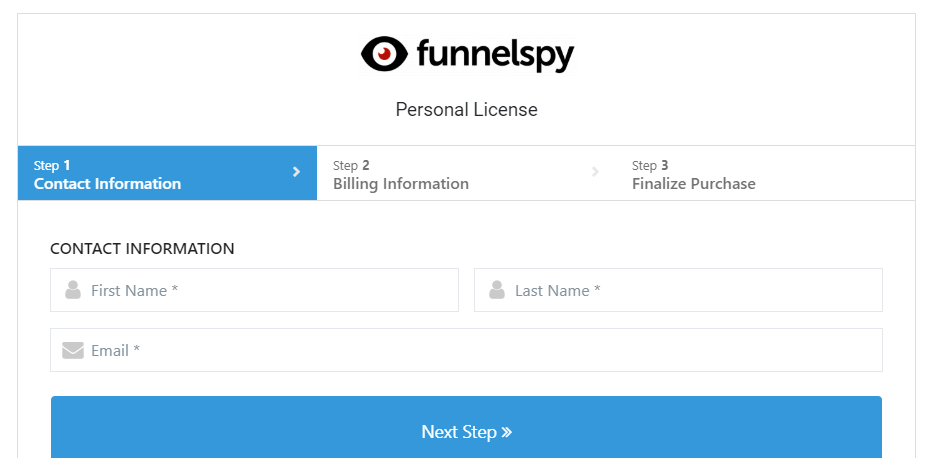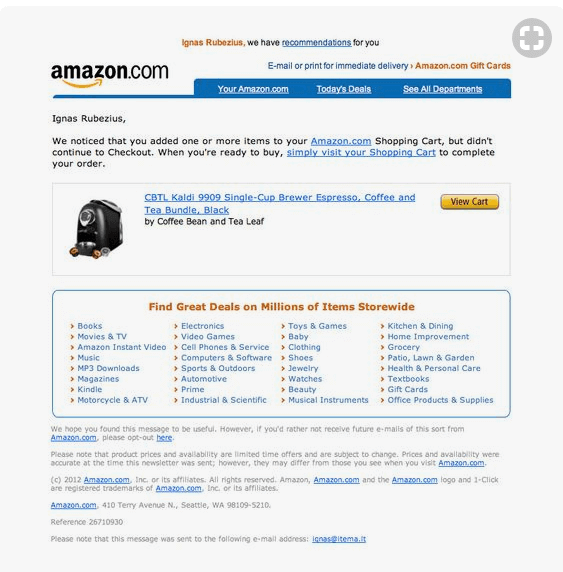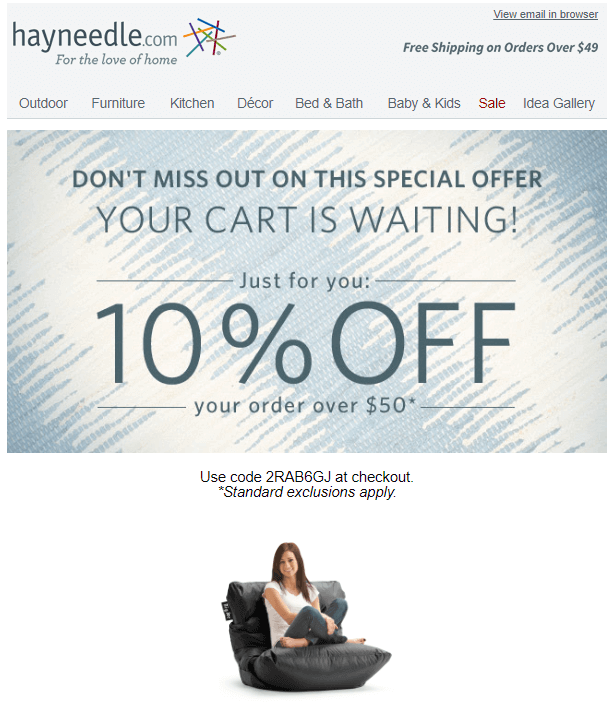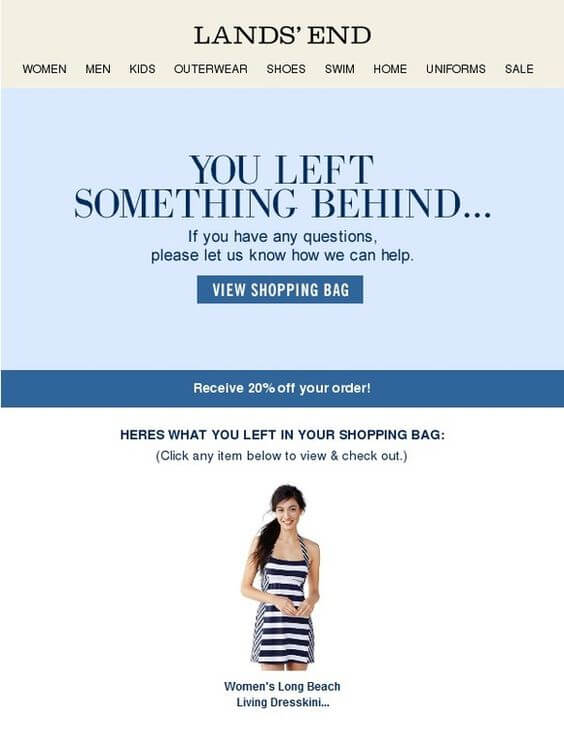Subscription growth hack (by PayKickstart)
Facebook Group - 3,932 members
Visit Group
If you’ve been selling online for longer than a few days then you know one of the biggest challenges is abandoned customers. Some estimates put the number higher than 70%.
Across the entire ecommerce industry, trillions are lost due to abandoned customers. While some abandoned carts can’t be recovered, the majority aren’t a lost cause.
With the right email nurture sequence, you can reengage the people who left the cart before checkout and encourage them to finish the sale.
This article will focus on how to implement an abandoned cart sequence that’ll help you convert more visitors into sales.
Before you can implement a successful email nurture sequence to win back abandoned customers, it’s important to set up your checkout page the right way. Many vendors ask for all the contact and payment information on the same page.
While this may be useful in certain instances, most of the time, it’s beneficial to break long forms into multiple pages. That way, you can capture name and contact information first. If the shopper eventually abandons the cart, you can follow up with them using the contact information you collected.
If you don’t break the form into multiple stages then you won’t be able to capture contact information before the shopper leaves. That means there’s no way to send follow up messages to encourage them to come back to your cart and finish their purchase.
Here’s an example of a multi-step checkout form you can create within PayKickstart.

Have you ever wondered why abandoned cart emails get so much love in marketing circles? It’s because they work. The average email open rate, according to Mailchimp, is 20.81%. Research from Moosend found that cart abandonment emails are opened 45% of the time and of those opened, 50% are clicked. Half of the people who clicked also purchased.
If you started with 100 abandoned customers, about 10 of them would complete their purchase after the first email you send out.
Why stop there?
If one email is so effective, then why not send 2 or more to ensure the people who really wanted to purchase have that opportunity? Let’s look at a three-part abandoned customer nurture sequence.
There are two aspects to consider when sending out cart abandonment emails. Both are equally important.
Someone is on your website, they’ve added items to checkout, and don’t finish. A number of things can happen at this point. They close the browser window, go to another page on your website, or go to a different website altogether.
It’s possible they want to come back to complete their purchase later in the day or on a different device. In reality, we can only guess as to why people abandoned the cart.
You don’t want to send the email too soon because they might have been planning to come back on their own. You also don’t want to send it too late because they may have changed their mind.
There’s no hard and fast rule here but the first email should be sent within 12 hours of abandonment. The exact timing will depend on your own experimentation. Leave enough time for them to come back on their own but don’t wait so long that they forget what they were doing.
The content of your email is where the magic happens. In the first email you send, it’s important that you don’t give your potential customers a discount.
Why is that?
As mentioned before, people abandon carts for any number of reasons. They may have gotten distracted, been at work, or the internet was acting up. Many of those shoppers don’t need an extra incentive to buy. At the same time, if you immediately offer a discount may set the expectation that every time they abandon the cart, you’ll offer a discount. That’s not fun.
Instead, use your first email to remind the shopper of their purchase and introduce a little urgency. You can tell them that you’ll only hold the items in their cart for a limited time. Placing an image of the item and the purchase price also helps nudge shoppers in the right direction.
Here’s an example from Amazon.

Image source Pinterest
This email will pull in the most abandoned customers because the order is still fresh on their minds.
The first email will get a lot of the most motivated shoppers to purchase but it won’t move everyone off the fence. For that, we have the second email in the nurturing sequence.
This email should be sent out more than 36 hours after cart abandonment but less than 72 hours afterward. This is about two days after abandonment and gives your potential customer enough time to check the first email, consider the first purchase, and keep you top of mind.
In this email, you can include a discount to incentivize the people who’re less motivated than those who bought through the first email. Focus the copy on what’s in the cart and the benefits of making the purchase.
Here’s an example from Hayneedle.

Some email sequences have up to five emails but that’s too many in a lot of niches. Of course, your audience may be different so be sure to test. In most cases, three emails are enough to get people who’re going to buy to finally make a decision.
The third email is the final reminder and you should let it be known. Add urgency by telling them you won’t email them again and that you’re going to remove their items from the cart. This works best if you have a physical product but you can also get away with it when you have digital products.
Whether you used a coupon in the second email or not, this is a good time incentivize potential customers. If you did use a coupon, remind the reader that it’s available and will be off the table in a few hours.
Send this email out a little bit after the 72-hour mark. Three days is enough time to make a decision and if people don’t convert then they probably aren’t going to.

Source: Pinterest
Abandoned customers are a real issue facing almost every business that sells online. You have two options:
This post is for those who are focused on getting proactive. I’ve outlined three emails you can send and given you examples of how they can look. Now, all you have to do is implement them and tweak as time goes by.
Let me know how you’re cutting down on abandoned customers in the comments and don’t forget to share.
Matt Callen is co-founder of PayKickstart. He has founded several million dollar online businesses and lives in Indianapolis. Since 2006, he has helped hundreds of thousands of entrepreneurs scale and grow their online businesses with software and automation.
Read More About Matt Callen